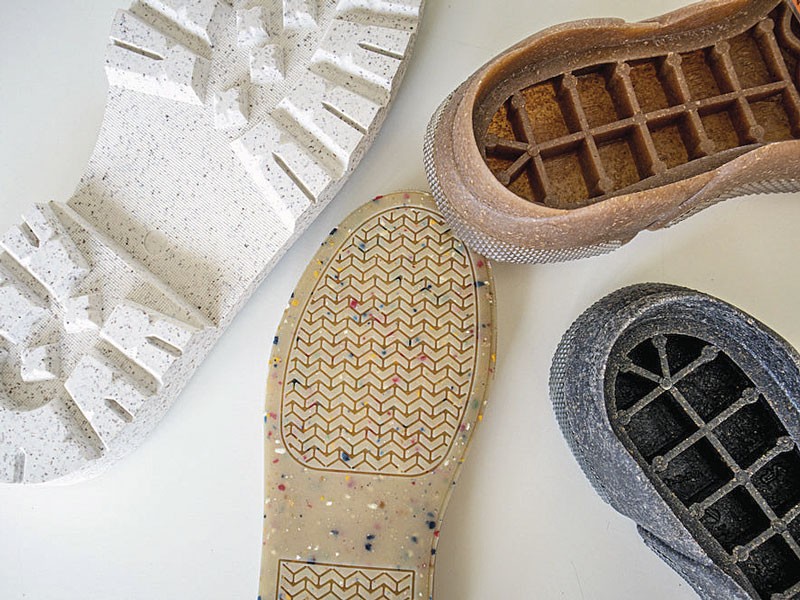


The recycling process of polyethylene terephthalate (PET) bottles and containers for the manufacture of textiles and soles for footwear is a clear example of circular economy.
This process converts waste into a high-value raw material, reducing dependence on petroleum and lowering CO₂ emissions. Although procedures may vary slightly, they generally follow the steps below:
The first stage involves collecting PET bottles from recycling containers. Once they arrive at the recycling facility, they are sorted to separate PET from other plastics and contaminants (labels, polypropylene caps, adhesives). This separation is carried out manually and/or automatically using optical sensors. The bottles are then compacted into large bales for easier transport.
The bottles are ground in a specialized machine into small fragments known as flakes. These flakes are then subjected to a rigorous washing process using water and detergents to remove dirt, food residues, and contaminants. Floating flakes are separated from those that sink, since PET is denser than water, a feature that helps purify the material.
Once clean, the PET flakes are thoroughly dried, as any remaining moisture can affect the quality of the final product. The flakes are then extruded, melted at high temperatures to form a liquid mass that is cooled and cut into small granules or pellets.
Various footwear products can be obtained from recycled PET pellets:
For textiles:
The pellets are melted and extruded through a spinneret, a plate containing hundreds of tiny holes. This process produces continuous polyester filaments. These filaments are stretched, spun, and woven to create fabrics. Recycled polyester yarn can be blended with natural fibers (such as organic cotton) to improve comfort and breathability.
For soles:
PET pellets are mixed with additives and heated to form a moldable mass. This compound is injected into molds to create soles. In some cases, other recycled materials, such as used tires, can be shredded to make soles.

